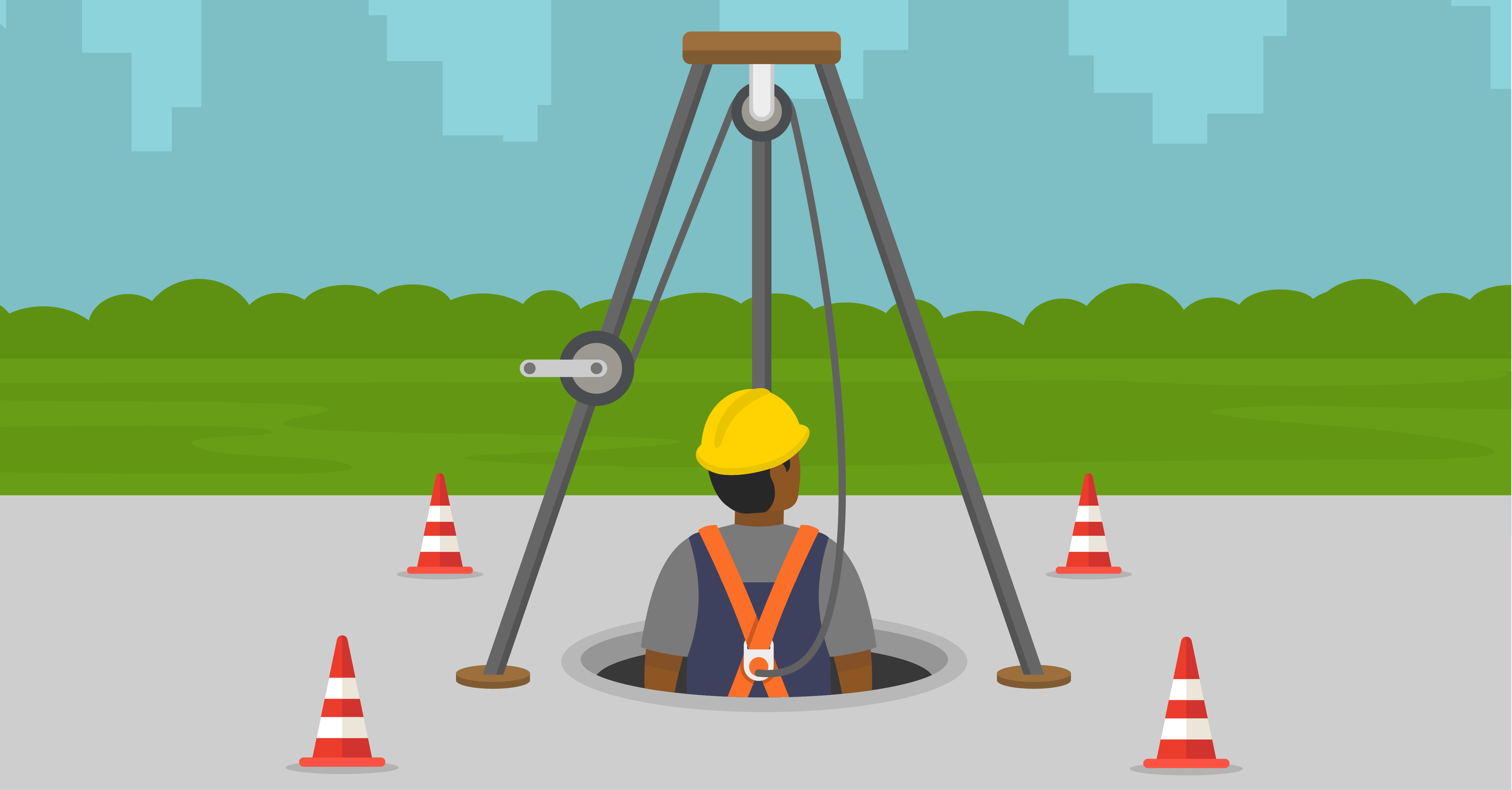Work-Related Stress: Every Working Day, 2 Construction Workers in UK, Ireland Die from Suicide
September 23, 2021

Stress, depression or anxiety account for 51% of all work-related ill health cases and 55% of all working days lost due to work-related ill health in the UK. Stress impacts on all sectors and businesses of all sizes.
Perhaps one of the hardest hit occupations is construction. A new short film, “On the Edge,” from AKT Productions and Ambanja Films, depicts a construction worker who is on the edge, literally and figuratively. Suffering from both depression due to family concerns and work-related stress, he contemplates taking his own life.
Major contractors BAM provided a construction site in Whitechapel, London, as a film location and also consulted on the project. The film was supported by the Lighthouse Club charity, which provides emotional, physical and financial support to construction workers and their families.
“It was just a ‘good timing’ moment because AKT had the skillset, ideas and same desire to raise this powerful but sensitive subject, so we were more than happy to help them develop the script and provide the film location,” said Ewen Hunter, construction director for BAM.
The film, which is not graphic in nature but is very emotional, carries a warning for more sensitive members of the audience. “Although the film and subject are sensitive and distressing, our industry has one of the highest death rates so to be able to be involved in creating this film matters a great deal to many people,” Hunter added. “Thousands of people in our workforce alone will be viewing it and I know it will prompt some very valuable conversations. It may even save lives.”
“On the edge” is freely available for employers and others to share and discuss, and we have embedded it in this article. I watched the film for the first time on the PBC Today web site, which offers other, related content, such as:
- Wates launches suicide awareness campaign for workers
- A new approach to support mental health in construction
- Flexible working improves construction workers wellbeing
- Is the economic recovery hiding mental health issues among construction SMEs?
- Nine in 10 project managers believe work harmed their mental health
- Is the construction industry suffering from a burnout?
Work-Related Stress and Mental Health
Work-related stress and mental health problems often go together, and the symptoms can be very similar. Work-related stress can aggravate an existing mental health problem, making it more difficult to control. If work-related stress reaches a point where it has triggered an existing mental health problem, it becomes hard to separate one from the other. What is clear is that employers have a legal duty to protect employees from stress at work by doing a risk assessment and acting on it.
As noted by the Health & Safety Executive (HSE): “Whether work is causing the health issue or aggravating it, employers have a legal responsibility to help their employees. Work-related mental health issues must be assessed to measure the levels of risk to staff. Where a risk is identified, steps must be taken to remove it or reduce it as far as reasonably practicable.”
Some employees will have a pre-existing physical or mental health condition when recruited or may develop one caused by factors that are not work-related factors. Employers for workers with pre-existing conditions may be subject to legal requirements, to make reasonable adjustments under equalities legislation. Information about employing people with a disability can be found on GOV.UK or from the Equality and Human Rights Commission in England, Scotland and Wales.
As noted by HSE on the web page “Mental health conditions, work and the workplace,” common mental health problems and stress can exist independently – people can experience work-related stress and physical changes such as high blood pressure, without having anxiety, depression or other mental health problems. They can also have anxiety and depression without experiencing stress. The key differences between them are their cause(s) and the way(s) they are treated.
Stress is a reaction to events or experiences in someone’s home life, work life or a combination of both. Common mental health problems can have a single cause outside work, for example bereavement, divorce, postnatal depression, a medical condition or a family history of the problem. But people can have these sorts of problems with no obvious causes.
As an employer, you can help manage and prevent stress by improving conditions at work. But you also have a role in making adjustments and helping someone manage a mental health problem at work.
On the Edge – Suicide Prevention from akt on Vimeo.
Work-Related Factors Associated with Poor Health/Stress
Evidence shows that there are six key factors which, if not properly managed, are associated with poor health, lower productivity and increased accident and sickness absence rates. The six key factors are:
- Demands: Workload, work patterns and the work environment
- Control: How much say the person has in the way they do their work
- Support: Encouragement, sponsorship and resources available to workers
- Relationships: Promoting positive working to avoid conflict and dealing with unacceptable behaviour
- Role: Whether people understand their role within the organisation and whether the organisation ensures that they do not have conflicting roles
- Change: How change (large or small) is managed and communicated.
Rob Vondy, Head of Stress and Mental Health Policy at HSE, said: “It’s well known that stress can make you ill. We know that work-related stress depression and anxiety has increased in recent years, and the last year has presented new challenges that have never been faced before, and which may affect the workplaces of the UK for some time to come.”
He said that good communication is vital because stress affects people differently. What is stressful for one person may not affect another.
“If you don’t understand the problem or its extent, tackling it will be more difficult,” said Vondy. “Factors like skills and experience, age or disability may all affect whether an employee can cope. People feel stress when they can’t cope with the pressures or demands put on them, either in work or other outside issues. Start talking to your colleagues about any issues now – the earlier a problem is tackled the less impact it will have.”
“On the Edge” allows us to visualize how disconnected and alone many people suffering from depression and anxiety feel, and it showcases some of the warning signs that an employee is nearing “the edge” when it comes to stress. The employee shown isn’t sleeping, is anxious, is showing a lack of interest in his work and has disconnected from coworkers.
“Employers should match demands to employees’ skills and knowledge. Recognizing the signs of stress will help employers to take steps to prevent, reduce and manage stress in the workplace. Healthy and safe work and workplaces are good for business and good for workers,” said Vondy.
HSE has a range of practical support and guidance available including risk assessment templates, a talking toolkit to help start conversations, workbooks, posters, a new mobile app and a new automated stress indicator tool (SIT). For more information see the stress section at www.hse.gov.uk There also is advice for line managers to help them support their employees with mental health conditions.
Mental Health, Work-Related Stress and the Management Standards
Although stress can lead to physical and mental health conditions and can aggravate existing conditions, the good news is that it can be tackled. By taking action to remove or reduce stressors, you can prevent people becoming ill and avoid those with an existing condition becoming less able to control their illness.
HSE’s Management Standards approach to tackling work-related stress establishes a framework to help employers tackle work-related stress and, as a result, also reduce the incidence and negative impact of mental ill health.
The Management Standards approach can help employers put processes in place for properly managing work-related stress. By covering the six key areas of work design mentioned earlier, you will be taking steps that will minimize pressure, manage potential stressors and limit the negative impact that the work could have on your employees.





